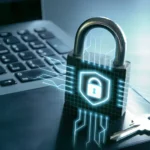In today’s digital-first era, numbers often represent more than just values—they can symbolize access, identity, or even secrets. One such intriguing sequence that has captured attention across various online platforms is 3113484167. At first glance, it appears to be just another random ten-digit number, but 3113484167 has begun to raise eyebrows for its unexpected appearances and connections in different technological domains.
Is it a digital access key? A user ID? A coded message? Or simply a random sequence? In this article, we explore the mystery, meaning, and potential applications of 3113484167, diving into why this number has become a subtle symbol in the tech landscape.
What is 3113484167?
On the surface, 3113484167 is just a ten-digit number. However, unlike generic numeric sequences, this particular combination has been associated with various identifiers across systems. From databases to encrypted tokens, and even user tracking IDs, 3113484167 has quietly emerged in multiple backend environments.
While some argue that 3113484167 is merely a placeholder or test ID used by developers, others believe it could be part of a larger networked system. This mystery has given the number a certain digital “aura” — especially among cybersecurity analysts and data scientists.
A Brief History of Numerical Identifiers
To understand the context of 3113484167, it helps to look at how numbers function in the digital world. Identifiers are everywhere:
- Phone numbers
- IP addresses
- User account numbers
- Product IDs
- Serial numbers
- Session tokens
All of these play a critical role in assigning uniqueness to entities in databases and digital systems. In many cases, a sequence like 3113484167 might be used internally by systems to track users or events without exposing personal information.
And yet, something about 3113484167 seems to transcend the usual. Its repeated occurrences across unrelated platforms have sparked interest from tech enthusiasts, programmers, and even curious consumers.
The Appearance of 3113484167 Across Platforms
Over the past few years, 3113484167 has been noticed in:
- APIs: Some developers claim to have seen 3113484167 used in authentication tokens.
- Databases: Analysts have come across 3113484167 as a default or test user ID in sandbox environments.
- Debug logs: Strangely enough, multiple systems across different regions have logged 3113484167 during error tracing or crash reporting.
- Gaming platforms: In niche communities, rumors suggest that 3113484167 has been used to unlock hidden content or Easter eggs.
What makes this even more intriguing is that none of these platforms are officially linked, leading to theories that 3113484167 could be part of a developer easter egg tradition or even a security watermark left intentionally by software engineers.

Symbolic Meaning or Coincidence?
Some digital theorists argue that 3113484167 might be used similarly to how “123456” or “000000” are used as obvious dummy entries—but with more complexity to avoid easy detection or brute force attempts. This adds a layer of obscurity and function.
On forums and code-sharing communities, developers joke about 3113484167 as the “phantom user” or the “ghost ID” that shows up when no other explanation exists. It has almost become an inside joke among backend engineers and cybersecurity professionals.
But could 3113484167 also hold a symbolic or cultural meaning? Some suggest that the number is an encoded version of a message when run through specific hashing algorithms. Others believe it could represent a timestamp or binary conversion of an event that happened in a specific system.
The possibilities are endless, and the mystery only deepens with every new sighting.
The Role of 3113484167 in Data Privacy
Beyond its curiosity, 3113484167 has sparked an important conversation about digital identity and anonymization. If such a number is being used across different systems, even anonymously, it raises concerns about:
- How user data is tracked
- The reuse of identifier numbers
- Whether certain numbers are more traceable than others
- How system logs might unintentionally expose consistent IDs like 3113484167
While most public-facing systems don’t expose internal IDs, the recurrence of 3113484167 has been a lesson in data hygiene and privacy best practices. For developers, it’s a reminder that test data, even numeric, can accidentally persist and lead to confusion—or worse, security holes.
Is 3113484167 the New Placeholder Standard?
Just as “lorem ipsum” is the go-to placeholder text in design, or “foo” and “bar” in coding, there’s growing speculation that 3113484167 is being unofficially adopted as a placeholder number in dev environments.
Here’s why:
- It’s long enough to resemble real data (like phone numbers or user IDs)
- It’s not a predictable pattern (like 1111111111)
- It doesn’t correspond directly to public figures, existing phone codes, or SSNs
As such, 3113484167 works well as a non-threatening, pseudo-realistic placeholder in software testing. Some tech companies are even rumored to have included 3113484167 in their QA protocols for simulating traffic or error logs.
A Fun Speculative Twist
A fun twist that’s been circulating online is that 3113484167 might be the digital equivalent of a “watcher.” A kind of symbolic ghost in the machine—always present but never seen.
Imagine a user who never logs out, always appears in logs, but has no real-world trace. It’s the perfect fodder for digital mythology.
This fictional interpretation, though playful, highlights the increasing intersection between data, technology, and storytelling. And 3113484167, whether real or mythic, has become part of that narrative.
What’s Next for 3113484167?
We may never know the true origin or purpose of 3113484167, but that doesn’t diminish its importance. As more systems grow complex and data becomes increasingly abstract, such identifiers remind us of the silent architecture behind our digital lives.
Whether you’re a software engineer, cybersecurity expert, or just a curious tech observer, keeping an eye on 3113484167 is a fun, harmless way to engage with the hidden corners of the tech world. And who knows—maybe one day, we’ll discover it was part of something much bigger all along.
Conclusion
3113484167 may be just a number on the surface, but in the digital realm, it’s become more than that. It’s a symbol of anonymity, a spark for curiosity, and a topic that brings developers, data analysts, and digital theorists together. While it might never receive official recognition, the recurring appearance of 3113484167 in different technological spaces makes it one of the most mysterious numbers of our time.
Whether it’s coincidence, code, or intentional design, 3113484167 continues to capture imaginations across the digital world.


